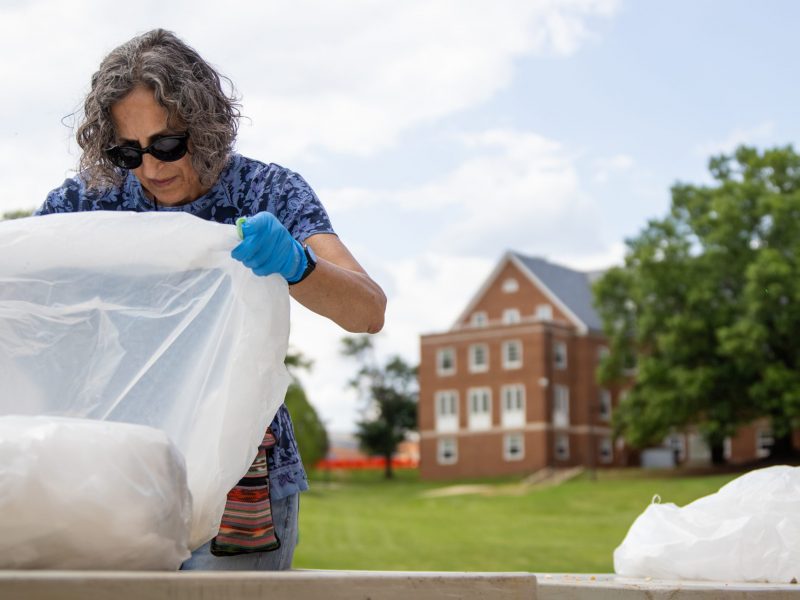
Today’s topic is an alarming consumer trend that threatens each and every honest, hardworking student, and I’m not talking about Ashton Kutcher movies in back-to-back months.
I am referring to how everything these days comes in squeeze bottles. To the product manufacturers, I say: Dude, where’s my glass jar of jelly?
The prevalence of squeeze bottles really hit me during spring break. My brother and I were out of toothpaste, so I asked my mom, a dental hygienist and resident toothpaste expert, to get us another tube. Much to my surprise, however, I soon found a squeeze bottle of vanilla-flavored toothpaste in the bathroom. (Don’t get me started on those nauseating flavored toothpastes. Toothpaste is not supposed to taste good — that’s why you spit it out.)
Seeing the squeeze bottle was disappointing because there is no greater investment than a tube of toothpaste. Tubes last forever — even longer if you squeeze really, really hard. When I came back to school, I was still thinking about the squeeze bottle, so I asked my mom why she bought it. She responded: “What did you do for dinner tonight?”
Eventually, she explained the toothpaste squeeze bottles are not as messy as the tubes. Her reasoning translates well in the kitchen, where squeeze bottles are most prevalent. After all, if you come back from a hard night of, um, “studying,” and have a hankering for a turkey sandwich, it is much easier to get mayonnaise out of a squeeze bottle than scraping it out of a jar.
But I use mustard on my turkey, and I don’t like the new mustard squeeze bottles. The old ones, you may recall, looked like Humpty Dumpty wearing a dunce cap. The best feature of those bottles was the nozzle, which easily navigated the mustard onto the sandwich. The new bottles, on the other hand, are rectangular, with handle grooves on the sides and a little nub on top; they most closely resemble bottles of designer cologne. Lacking a nozzle for navigation, these bottles often cause me to close my eyes and squeeze, hoping against hope that mustard somehow lands on my food.
The same thing goes for ketchup. The long-necked plastic bottle, ideal for navigation, has been replaced with an oversized, cologne-like squeeze bottle. Unlike the new mustard bottles, the new ketchup bottles are so unwieldy I simply worry about keeping ketchup off my shirt, let alone getting it on my food.
The biggest casualty of the squeeze-bottle revolution, however, is jelly. In my refrigerator, I have a squeeze bottle of strawberry jelly. It squirts easily right on top of the peanut butter on my cinnamon swirl bread, which is exactly why I don’t like it.
When we were kids, making a peanut butter and jelly sandwich meant getting your hands sticky. It meant screwing the top off the jelly jar, dipping a knife deep into a glass coated in dried-on jelly, struggling to balance the jelly on the knife, and repeating the process until the knife sticks to your hand. Five hours later, and after taking a shower to get all the jelly off yourself, you enjoyed that sandwich as if it were the last one on Earth.
I don’t like squeeze bottles because they are so different from what I grew up with. Fifty years from now, I can see myself telling my grandkids about how we used to get ketchup from glass bottles, only if we hit it right on the “57.”
Grandkid: More ketchup, please. (In midair, a hologram of a ketchup bottle appears. The child touches the hologram, turning the image into a real bottle that pours right on a plate.)
Me: Bah! That’s nothing! Back in my day, we had actual ketchup bottles! Not only did we have to hit them just right to get ketchup out, but we had to do it while walking five miles uphill to school both ways in the snow!
Though I may not like squeeze bottles, I have to accept they are here to stay. That’s OK, because even though glass jars and old-school plastic bottles may become obsolete, my memories of those sticky jelly fingers will last almost as long as a tube of toothpaste.
Danny Jacobs is a junior journalism major. He can be reached at jacobs@wam.umd.edu.



